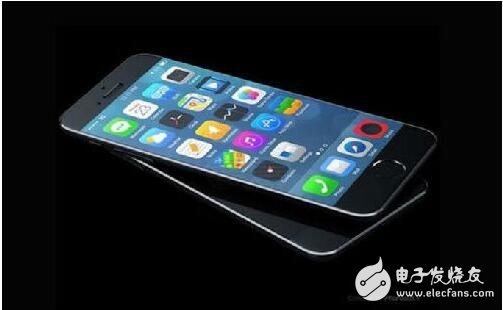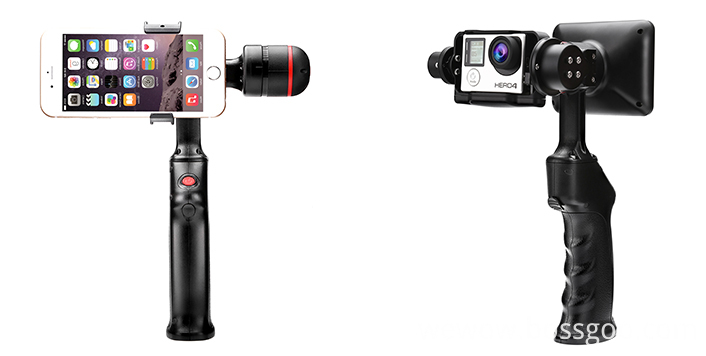As technology matures, organic light-emitting diode (OLED) panels are gaining more and more attention. The next-generation iPhone will adopt OLED panels, which will further detonate the wave of this OLED panel expansion. This is not at Apple's press conference last week. The biggest feature of the new notebook MacBook Pro is that the new "Touch Bar" touch strip uses an OLED panel, produced by the Samsung Display A2 line, and uses Samsung's driver IC. The Touch Bar is located at the top of the keyboard and replaces the original FuncTIon button. It can be used with different input functions depending on the program. MacBook Pro Only the Touch Bar uses OLED, and the screen is still a traditional LCD. According to industry sources, the MacBook ranks fifth in the global notebook market, and the Touch Bar is small in size. It has limited support for Samsung Display's performance, but it is important that the OLED touch strip is regarded as a product feature. It is said that the future MacBook will be converted to an OLED screen and has been tested. If Apple's smartphones and laptops abandon LCDs and switch to OLEDs, the supply chain will change. Samsung Display is the leader in small and medium-sized OLED panels, and Apple is bound to offer more orders to Samsung Display. Apple originally used LCD panels, and LGD is one of the major suppliers. At present, the yield of LGD small and medium-sized OLED panels is still poor. In case Apple switches to OLED, LGD technology can't keep up with it, and the living space will be severely compressed. Preparing for Samsung's orders for Samsung and LG According to foreign media reports, in order to compete for Apple's OLED screen orders in the future, Samsung and LG are ready to fight. It is reported that the two companies will invest 11.6 billion US dollars in this field this year, in order to expand production capacity, in preparation for the flexible screen orders for the iPhone next year. The next generation iPhone will use OLED screen South Korea's Samsung Display and LG Display have been deployed for ten years to successfully produce flexible OLED panels and build solid technical barriers. Samsung currently accounts for more than 90% of small and medium-sized OLED panels. Samsung and LGD are actively Expansion, even the most difficult process equipment for producing OLEDs, Samsung has already placed a large number of orders with nearly exclusive equipment supplier Canon Tokki. It is reported that an OLED key spill machine has only three or four annual output. station. Analysts say Samsung now has about 95% market share in small and medium-sized OLED screens, and Samsung's OLED screens for smartphones, notebooks, monitors and TVs are leading. And LG is speeding up to catch up, and now they are building the world's largest OLED panel manufacturing plant. Although Apple's OLED replacement is already a nail on the board, but the rumors of rumors are getting more and more glamorous, we don't know whether it is a full line of dressing or only a certain dress. Due to the large volume of orders, Apple may adopt a multi-supplier supply strategy, and Samsung, which dominates the market, may not be able to take orders. In addition to the two major Korean factories that had been heavily battling under the OLED cloth, Sharp, who had a rich father's blessing, also intended to compete. However, in this order competition, more than two South Korean giants, Sharp and Applied Materials have joined the battle group, and the former has just been acquired by Foxconn this year. This is definitely good news for Apple, they can get enough room for price reduction. In March of this year, Sharp, which has been blessed by Hon Hai, announced that it will invest a total of 200 billion yen in the development of the OLED panel business. In September, it established a number of OLED panel production lines in Osaka's Osaka Plant and Mie Prefecture. Compared with Japanese, Korean and mainland manufacturers, Taiwan's development in OLEDs has been much slower. Even AUO is also an early OLED production panel manufacturer, focusing on small and medium-sized boutique markets and taking a circular cutting differential route. It is expected to mass produce flexible AMOLEDs in 2017, but the production capacity is still small, and there is no large-scale OLED investment plan. In recent years, the rise of the mainland panel factory, in addition to opening the LCD capacity, BOE, and Huiji OLED production line, actively invest in the AMOLED production line. The mainland factory not only opened the 10.5 generation, 11 generation high-generation TFT-LCD production line, but also did not want to let go of the emerging OLED technology. Continental's local panel factory layout OLED mainly based on active organic light-emitting diode (AMOLED), panel maker BOE announced on the evening of 30th, 28th has signed the sixth-generation flexible AMOLED production line project with Mianyang City, the second largest city in Sichuan Province. The Investment Framework Agreement will set up a company in Mianyang City. According to the announcement, the registered capital will be RMB 26 billion. The official expectation will be officially started in the second quarter of 2017 and will be officially put into operation in 2019. The preliminary plan will lock in the high-end. Small and medium size flexible AMOLED product applications. BOE has not only laid out this AMOLED layout. In February this year, it announced the signing of the second phase project of Chengdu 6th Generation Line Factory. The estimated total investment amounted to 46.5 billion yuan, which is the largest investment ever made by BOE Group. The official expects that Phase I and Phase II will continue. It will be put into production in 2017 and the second quarter of 2018, aiming at flexible AMOLED small and medium-sized panels, with a total capacity of 48,000 glass substrates per month, and is applied to high-end smart phones and wearable devices. In the original 5.5-generation production line of BOE Erdos in 2011, the AMOLED production capacity was originally configured to be 0.4 million pieces. However, as of June this year, the production of hard AMOLED panels in small batches has been reported, and the development can be slow. Together with the Chengdu 6th generation line and the Mianyang 6th generation line, the future BOE OLED production line may see four. Hehui Optoelectronics, which invested in AMOLED earlier, started mass production of hard AMOLEDs in 2014, becoming one of the early manufacturers to successfully produce AMOLED panels by breaking the Korean monopoly. Hehui Shanghai 4.5 generation line plant AMOLED monthly production capacity of about 15,000 glass substrates And plans to switch to flexible AMOLED panel production in Shanghai plant. The production capacity is expected to be released in the second quarter of 2017. In September this year, Huihui also announced that it will save RMB 27.278 billion to build a 6-generation AMOLED plant, which is scheduled to be tested at the end of 2018. Production, production in 2019, planning monthly production capacity of 30,000 glass substrates, also targeting small and medium-sized panels. Two-axis stabilizer is composed of rolling axis and tilt-axis. With a gyro-stabilized gimbal system, it reduces the movements when you are moving to shoot a smooth video. Two-Axis Stabilizer,Popular Two-Axis Stabilizer,Professional Two-Axis Stabilizer,Handheld Two-Axis Stabilizer GUANGZHOU WEWOW ELECTRONIC CO., LTD. , https://www.stabilizers.pl
2 axis gimbal stabilizer can be divided into 2 parts, including two-axis stabilizer smartphone stabilizer and 2axis motion camera stabilizer.

Wewow focusing on handheld stabilizer is a technology company which does R & D independently. With Wenpod series product released, the company achieved the industry's praise and quickly became the leader of the smart stabilizer industry.
Our service
1. Reply to you within 24 hours.
2. Already sample: within 1-2days.
3. Shipping date: within 24 hours once get the payment.
4. 12 months warranty.
5. After-sales service, solve within 3 working dates.
If you have any questions, please contact with us directly.
Wewow appreciates domestic and international business relationship!
August 11, 2021